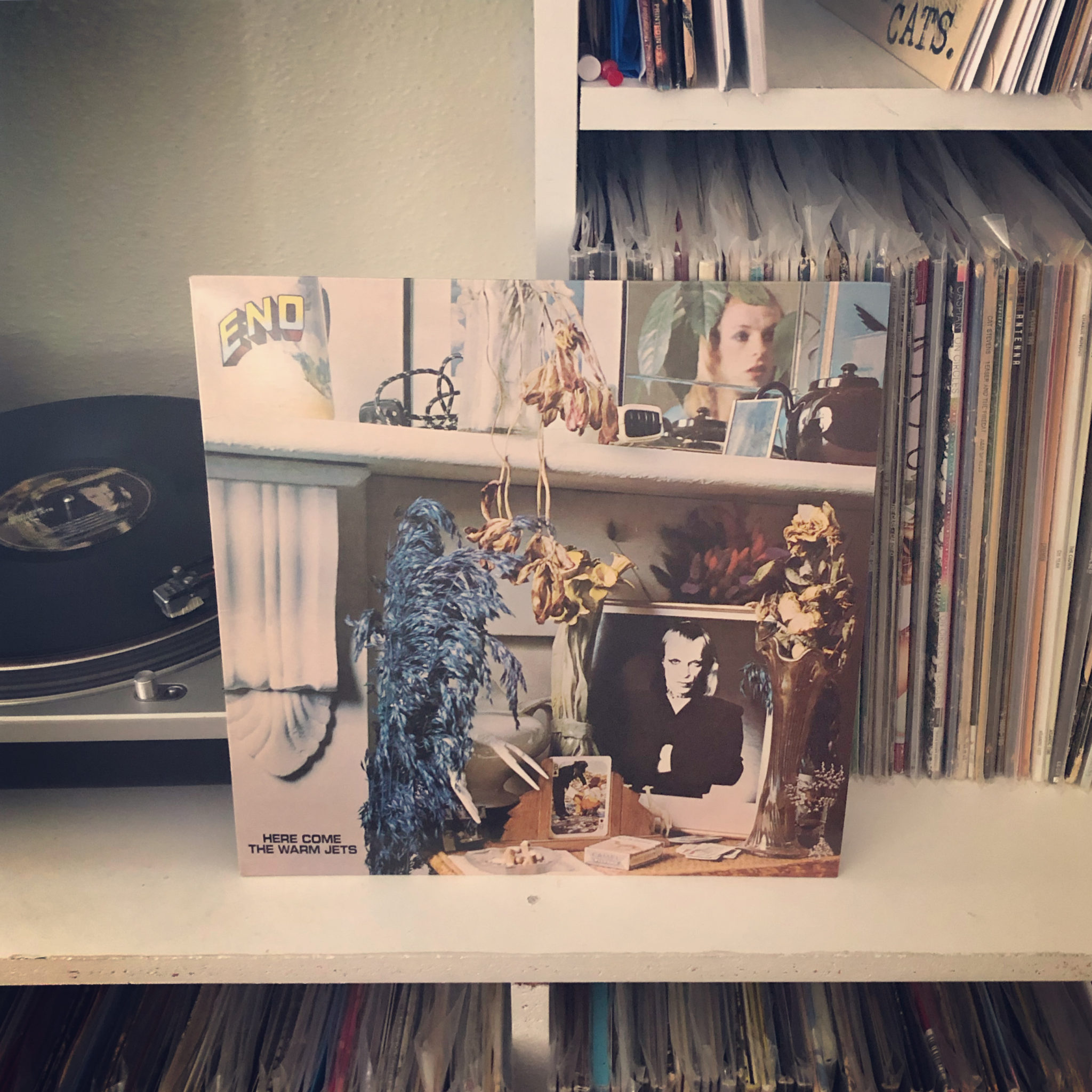 Before turning U2 into the biggest rock band in the world, before pulling true greatness out of the Talking Heads, before going with Bowie to Berlin, before collaborating with David Byrne, Roger Fripp, Daniel Lanois, Slowdive, and more, before inventing ambient music, Brian Eno played synthesizer for the art rock/glam rock outfit Roxy Music.
Before turning U2 into the biggest rock band in the world, before pulling true greatness out of the Talking Heads, before going with Bowie to Berlin, before collaborating with David Byrne, Roger Fripp, Daniel Lanois, Slowdive, and more, before inventing ambient music, Brian Eno played synthesizer for the art rock/glam rock outfit Roxy Music.
After rising tensions with Roxy bandleader Bryan Ferry proved too much to handle, he struck out to make a solo career for himself.
The resulting debut is a revelation, combining glam theatrics, Beatles-like popcraft, and forward-thinking sonic exploration that would inspire legions of future musicians.
Being familiar with Eno mostly as a producer, ambient musician, and Bowie collaborator, I wasn’t totally what to expect from the widely acclaimed Here Come the Warm Jets. But within the first few moments of “Needles in the Camel’s Eye,” I was convinced. And what’s more, I suddenly realized just how much of a factor he was in Bowie’s Berlin Trilogy—particularly on “Heroes,” the title track of which would borrow much of its sonic landscape from the opening track’s pounding rhythm and soaring guitar.
While this sonic palette appears elsewhere on the record, they’re often twisted out of recognition. “Paw Paw Negro Blowtorch” (poorly aged title aside) hits the the same buttons as the best tracks on Ziggy Stardust, plus a bizarre noise solo created by instruments of unintelligible origin. “Baby’s On Fire” follows with a dissonant pulse, skittering hi hats, and oozing guitars while Eno sings of a bizarre crowd watching an infant immolate. The true star of this track however is King Crimson’s Roger Fripp, who imitates the titular fire with a molten guitar solo that lasts most of the five-minute track. “Driving Me Backwards” is driven by an ugly piano pound with Eno’s tortured voice wailing above the dissonance like some sort of Bizarro world Paul McCartney.
Side B switches gears with the almost serene “On Some Faraway Beach.” It almost feels like one of Bob Seger’s more emotional ballads, save for the ambient lead guitar line and nihilist lyrics (“Given the chance, I’ll die like a baby.” Jeez, okay Brian.) “Dead Finks Don’t Talk” is almost…pretty? A twinkling piano arpeggio rises among a cloud of synthesizers and organs alongside an angular drumbeat. Eno’s strange vocal delivery is the only thing keeping it from being a tender ballad (well, that and the noise interruption at the end). It’s interrupted by “Some of Them Are Old,” a string, choir, and organ accompanied psychedelic ballad that feels like an alternate universe Beatles track.
The real revolution of this album though is the closer, “Here Come the Warm Jets.” Electric guitars are overdriven to the point where their tone is almost unrecognizable, sounding more like warm cellos than guitars. A fill-happy drum beat fades in, joined by additional layers of overdriven guitars and a choir of buried vocals. It would be reminiscent of My Bloody Valentine if it didn’t come out years before Kevin Shields ever picked up an effects pedal.
Most interesting though is Eno’s thought process in assembling his backing band. Himself a self-proclaimed non-musician, he gathered a group of musicians that he thought would be incompatible with eachother. In his own words,
“I got them together merely because I wanted to see what happens when you combine different identities like that and allow them to compete … [The situation] is organized with the knowledge that there might be accidents, accidents which will be more interesting than what I had intended.”
Amazingly, it pays off. Those “accidents” did prove to be interesting, as Warm Jets’ arrangements are richer and more rewarding than just about anything anyone else was doing at the time (and have done sense). There isn’t an ounce of cliche across the forty-two minute runtime. Instead, it is consistently inventive, fresh, and diverse, not even playing off of its own winning formulas. And after finally giving it the attention it deserves, I see that it deserves every single bit of praise it garners. It is a truly revolutionary record, and a fitting (solo) debut from one of the most important artists in rock and roll history.